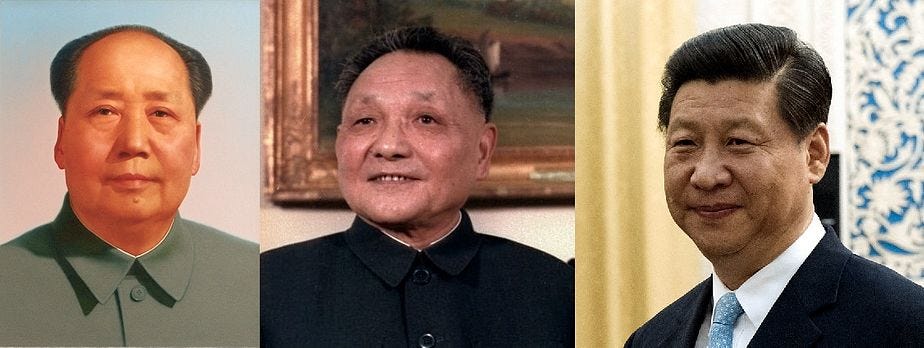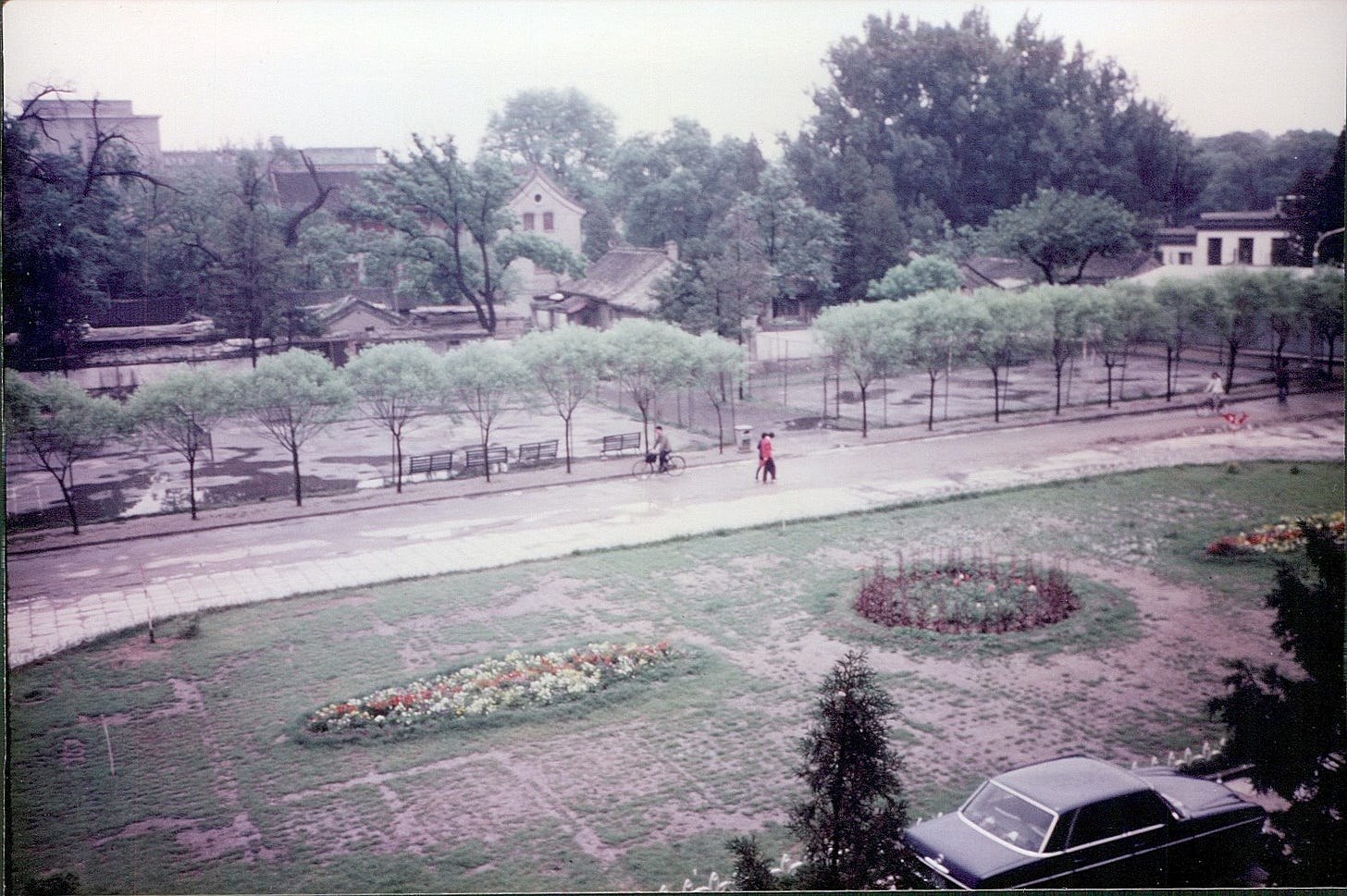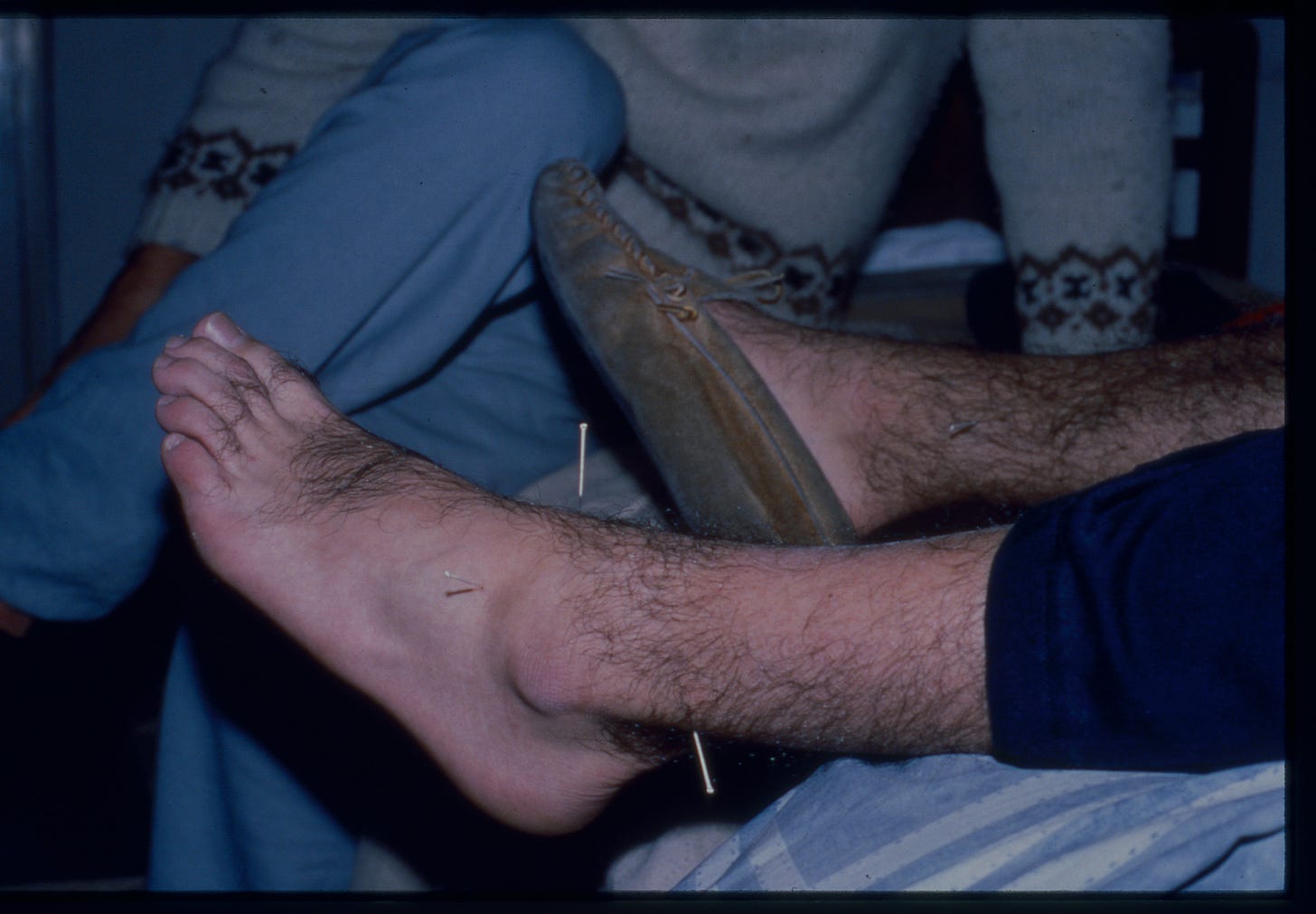China’s momentous political year continues. An important Communist Party meeting was held last week that set the stage for Chinese leader Xi Jinping to stay in power indefinitely. He will remain the guiding hand of China as the country continues to spread her wings, take advantage of opportunities, battle speedbumps and roadblocks, and navigate the future.
Sixth Plenum and China’s Xi Jinping
Acupuncture and my Mind
One More Thought
Sixth Plenum and China’s Xi Jinping
I have written about Chinese leader Xi Jinping more than once this year.1 Since he and China have become virtually synonymous and since China is topic number one for most of the Western world, this is not surprising.
Xi’s decade-long consolidation of political and military power and increasingly forceful control of social, cultural, and economic spheres of Chinese life have been impressive (good or bad depends on perspective). Whether the long-term goals of Common Prosperity (a leveling of economic and social benefits among Chinese people of all classes), National Rejuvenation (China regaining her place as a leading world power), and Socialism with Chinese Characteristics for the New Era (an all-encompassing political system that is paternalistically authoritarian) will be successful and sustainable remain to be seen. The fact that China today is a stronger, wealthier, and more confident place sets a baseline from which such lofty aspirations do not necessarily seem so far-fetched.
The Sixth Plenary Session of the 19th Central Committee of the Chinese Communist Party was held in Beijing during the second week of November. This gathering of a few hundred elite members of the Party ratified the course of China’s immediate future. The text of the Communique issued by the Session is here (English) and here (Chinese).
This year’s meeting is notable for two significant matters.
First, the Party issued only the third Historical Resolution in its 100-year history. This very lengthy “Resolution on Major Achievements and Historical Experience of the Party over the Past Century” establishes Xi Jinping’s position as the core of the Party and the center of the government and cements him in the Chinese Communist pantheon along with Mao Zedong and Deng Xiaoping, the promulgators of the first two such Resolutions in 1945 and 1981, respectively.
The Washington Post notes that when Mao and Deng issued their resolutions, “[b]oth used the process to solidify power, settle thorny internal debates about the past and forge ahead with a new agenda.” This time is different because China is not confronting any specific historical crises that need responding to (such as China’s plight leading up to and after World War II and the then recently-concluded Cultural Revolution). But the outcome is of equal import. The past century as propagandized and repackaged lavishly promotes the Communist Party’s preeminent role in China’s positive present and future as well as leaves no doubt as to the new paramount leader who is to receive credit for such success. All of the Party’s and Xi’s efforts scream that China is not to be ignored, sidelined or trampled.
Second, the path is clear for the 68-year-old Xi to be elected to a third five-year term as Communist Party General Secretary in 2022 and a third term as President in 2023. The beginning of this path lay in the 2018 revocation of term limits for China’s President. The Sixth Plenary Session effectively made it a reality. While there are many unknowns for the future and circumstances could certainly change, Xi Jinping can likely keep getting elected as long as he decides he wants to remain in charge.
Acupuncture and my Mind
I woke up with a sore neck a few days ago. It had been too long since I practiced qigong, so I did. As I stretched and tried to empty my mind, and repeatedly failed, I thought back to my experience with acupuncture in China in 1986.
Only a few weeks at Beijing University, I woke up one late summer day with a wrenched shoulder, neck, and back. A new American friend was a student of traditional Chinese medicine and Eastern philosophy. After several days of her persuasive recommendation, I agreed to let her give me an acupuncture treatment.
The following is an excerpt from my memoir, China Sings To Me:
I close my eyes. The thought of my body being pierced with little metal pain sticks runs on a loop through my mind. I am about to learn what a pincushion feels like. Will it be like getting a shot? With shots, I have found that the anticipation is worse than the reality, a quick stab of usually minor discomfort and then it is over. Will it start off light and grow in intensity? Will it be a horror of pain that does not end?
I am glad “Susan” cannot see my face. I am pretty sure I have not relaxed as instructed.
“Ok, Andrew. I’m done. You can open your eyes.” The statement catches me by surprise.
“‘Really? You just started. How many needles did you use?”
“Eight,’ she says evenly. ‘Two in the back of your neck. Five in your shoulder and back. And the last one is in the back of your left hand.”
“That sounds like a lot of needles.” I try to say this without my voice cracking. “How long will you leave them in?”
“Fifteen minutes.” Her answer is quick and quiet.
“I can’t feel them much.”
“That’s the point. I told you it wouldn’t be painful.” She gives a friendly chuckle. I imagine she hears this frequently from skeptical new patients. “You can open your eyes.”
I open my eyes and immediately wish I had not.
I am staring at the last needle. Inches from my face, this thin, evil barb is anchored in the back of my hand, quivering in the air. It taunts me with unfettered imagination.
This is no shot, no quick prick and then it is over. I don’t care what Susan says, this is fifteen minutes of quiet agony, knowing that I am pinned to my bed. I should not have opened my eyes. It doesn’t matter if the needles physically hurt or not. This is my body we’re talking about! To me, the sensation of discomfort in my mind is real. I know they are there. I am trapped within myself.
God, I hope I do not hyperventilate.
Susan senses my ongoing mental anguish. “Andrew, please close your eyes again and relax. Think of a quiet place that makes you feel calm.” I try. “Visualize your place of tranquility. Drift away into sleep.” She says this as gently as possible, trying to will me to breathe easy. I fail.
My mind races. My anxiety level spikes through the roof.
Seemingly hours later, but most likely the promised fifteen minutes, Susan removes the eight evil instruments from my body. “Wait a few days and see what happens.”
Sitting on my bed alone after Susan leaves, I struggle to get my blood pressure to stop redlining.
Because my first experience was ultimately a success, I was open to another treatment when I suffered a serious ankle injury one month later while playing basketball on the tennis courts then across from our dorm. Things did not go as smoothly this time.
While treating my softball-sized ankle, my left leg twitches as she inserts the needles. My face drains and “the individual beats [of my heart] cause my shirt to rise and fall in my mind. The pounding thump-thump, the image of those three-inch-long needles quivering like toothpicks in Jello-O squares, these aural and visual sensations are more than I can handle.” Susan calmed me as best she could with soothing words and skillful action. Somehow, the treatment worked, at least for a while.
My third, and to this day, last acupuncture treatment took place a few weeks after when my ankle relapsed. This experience was extraordinary.
Susan inserts a needle at a major qi point near the top of my left foot. It connects three main energy corridors in the body. This should relieve the blockage that causes my right ankle to balloon. Renewed circulation will lessen the symptoms and the pain. As the needle pierces the skin of my good foot, my world erupts. My leg bounces. I am definitely twitching. All I can see is bright, blinding light. I turn a ghostly pale and feel myself lifting out of my body. It is the most surreal experience, both awesome and terrifying. I am actually rising above myself. This is happening. My mouth opens, but I cannot speak. Susan senses the situation. She quickly removes the needle, and I spiritually and physically settle back into my shell, the journey aborted. My vision clears, and a hint of color returns to my face.
Giving that energy intersection a wide berth, Susan places another needle on the top of my left foot, near the middle. As the needle again sinks below the surface all five of my toes feel like they have been blown apart. It is excruciating. The throttled breath escaping my clenched lips is unnatural. I blindly grab at the mattress seeking stability. My back stiffens against the wall as I subconsciously retreat from the source of the terror. Susan removes the needle, concern and the faintest passing confusion flickering in her eyes. Acupuncture may be more than my untrained and unrestrained mind can handle.
To this day I wonder if I still rank as the worst patient she ever treated. Acupuncture is an ancient medical form that can and does work. Control of the mind is a key to its success. If my continued inability to empty my mind at qigong is any indication, such control is something that still escapes me.
One More Thought
In 1906, a young German, Ernst Boerschmann (1873-1949), made his second journey to China. He spent the next three years traveling throughout the breadth of the country with a camera and an eye for character and detail. He captured the “architecture, landscape, culture, and daily life of early twentieth-century China,” a China that mostly no longer exists. He subsequently published a book containing stunning photographs (here) of twelve Chinese provinces.
The four-sided, thousand-armed Guanyin statue at the Jiezhu Temple in Suzhou (see above) takes my breath away. The lonely South Gate of Taishan (Mount Tai), the warped stairs stretching to the Dingshan Gate at Wutaishan (Mount Wutai), and the spindly Anlan Suspension Bridge deep in Sichuan (see below) each call to me across twelve decades.
Follow Andrew Singer on Social Media: Instagram, Facebook, Twitter.
Photographs:
A. Sixth Plenary Session by Xinhua at www.chinadaily.com.cn/
B. China’s Leaders by wikimedia commons at thediplomat_2014-08-19_14-44-05
C. Acupuncture Chart by commons.wikimedia.org
D. Beijing University by the author
E. & F. Acupuncture by the author
G. & H. Ernst Boerschmann photographs from https://mp.weixin.qq.com/s/FoJWLLeHgDDhESaX4UaeNA













Hi there